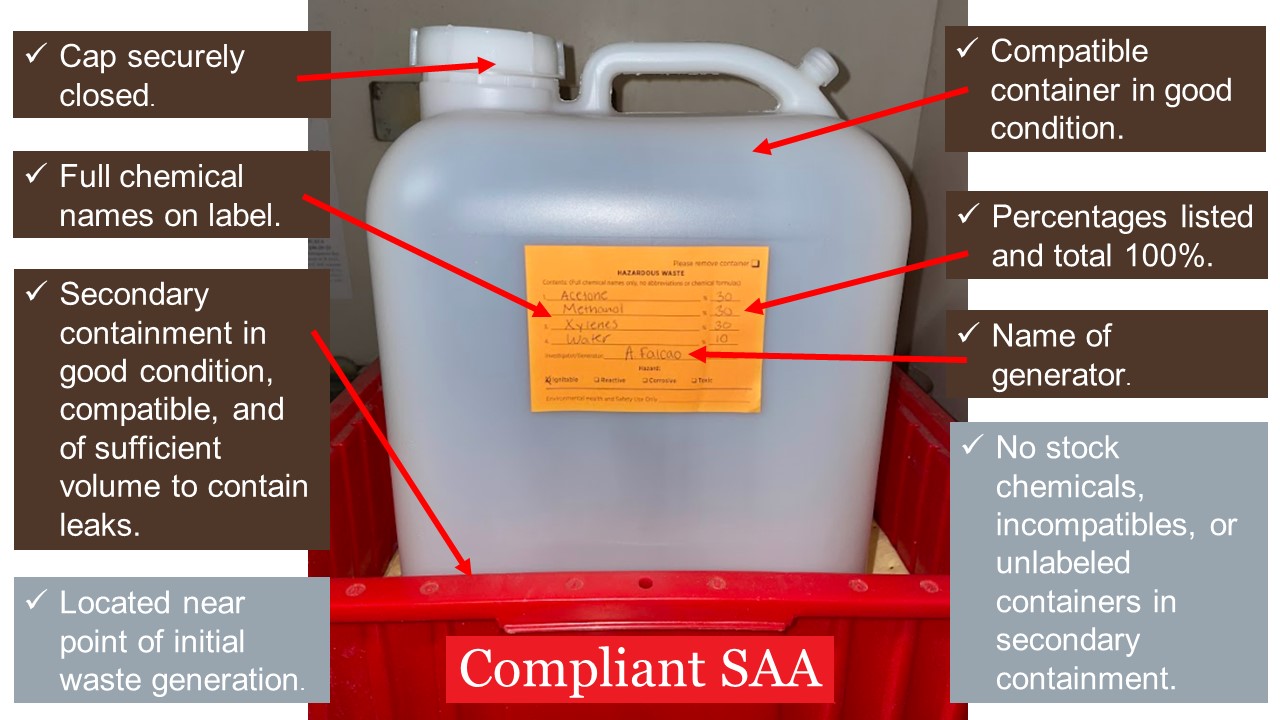Hazardous Waste
The proper management and disposal of chemical waste at Brown University must be compliant with all applicable federal, state, and local regulations. Hazardous wastes are defined in the Brown University Hazardous Waste Compliance Guidelines and are required to be managed by Brown University to ensure proper disposal in compliance with all EPA & RIDEM regulations. The responsibility for the identification and handling of waste at its point of generation, also known as a Satellite Accumulation Area (SAA), rests with the individuals who have generated the waste. Once waste has been identified in an area and all storage and management requirements outlined below have been met, the Office of Environmental Health and Safety will manage the pick-up, removal, and ultimate disposal of the waste in compliance with all applicable regulations.
Please reach out to the Office of Environmental Health and Safety with any questions regarding hazardous waste management.
[email protected]
10 Steps to Hazardous Waste Compliance
Waste Determination
- Is the waste an EPA defined solid waste (e.g., used, expired or unwanted chemicals)?
- Determine if that solid waste is a regulated hazardous waste:
Hazardous Waste Management Requirements for all SAAs:
- Hazardous Waste must be kept at or near the point where it is initially generated. (e.g., in the same room).
- Accumulation volume limits
- ≤55 gallons of hazardous waste; or
- 1 quart of acutely hazardous waste (P-Listed).
- Containers used or reused to collect hazardous waste must meet the following requirements:
- In good condition;
- Compatible with the waste being added;
- Any residues in reused containers must be compatible with the waste being added;
- Easily resealable (e.g., twist on lid); and
- No inappropriate containers (e.g., food containers, recycling bins, bags, or glassware disposal boxes).
- Containers must be closed when not actively collecting waste (e.g., caps tightened).
- Label with the Brown University provided orange hazardous waste label including:
- Full constituent names (e.g., no abbreviations or chemical formulas);
- Approximate percentages of each constituent (totaling 100%);
- Generator’s name or supervisor of the area or project; and
- Hazard(s) of the waste identified (checkboxes);
- Secondary containment (e.g., red trays are available in stockrooms).
- Compatible storage (e.g., segregate containers of incompatible wastes).
Emergency Preparedness
- Contingency Plan – In the event of an emergency chemical release or spill:
- Alert all personnel to evacuate the area;
- Call Brown Public Safety 24 hour emergency number: (401) 863-4111;
- Move a safe distance away and tend to injured personnel, if safe to do so; and
- Remain on scene to provide first responders with additional information, if possible.

Reminder: Red secondary containment trays and orange hazardous waste labels are available in all the stockrooms on campus at no charge for hazardous waste collection purposes only.
Chemistry Stockroom
BioMed Stores Operations
Engineering & Physics Stockroom Coordinator
